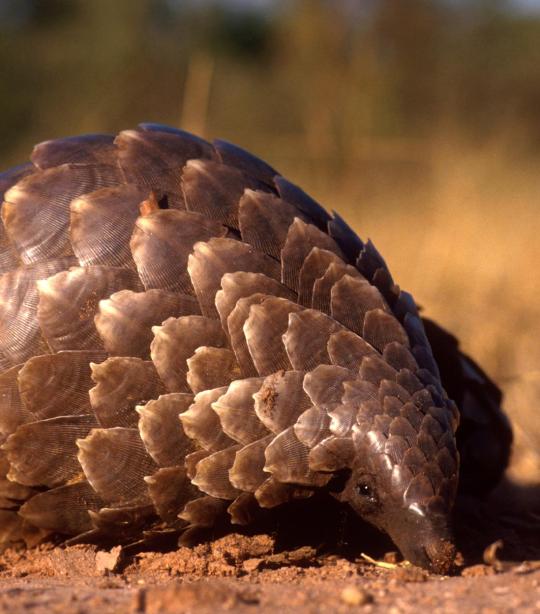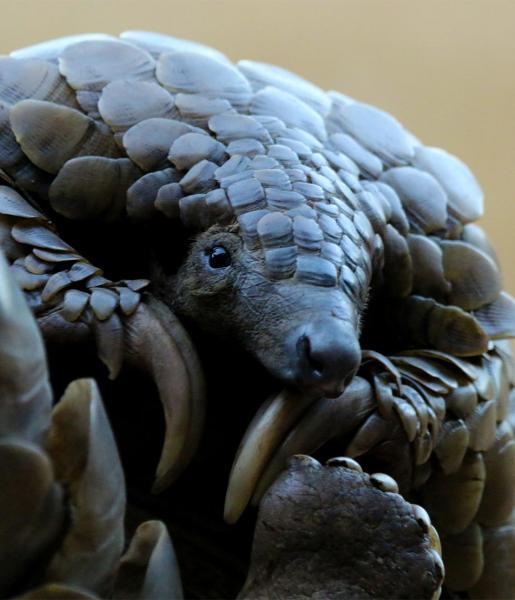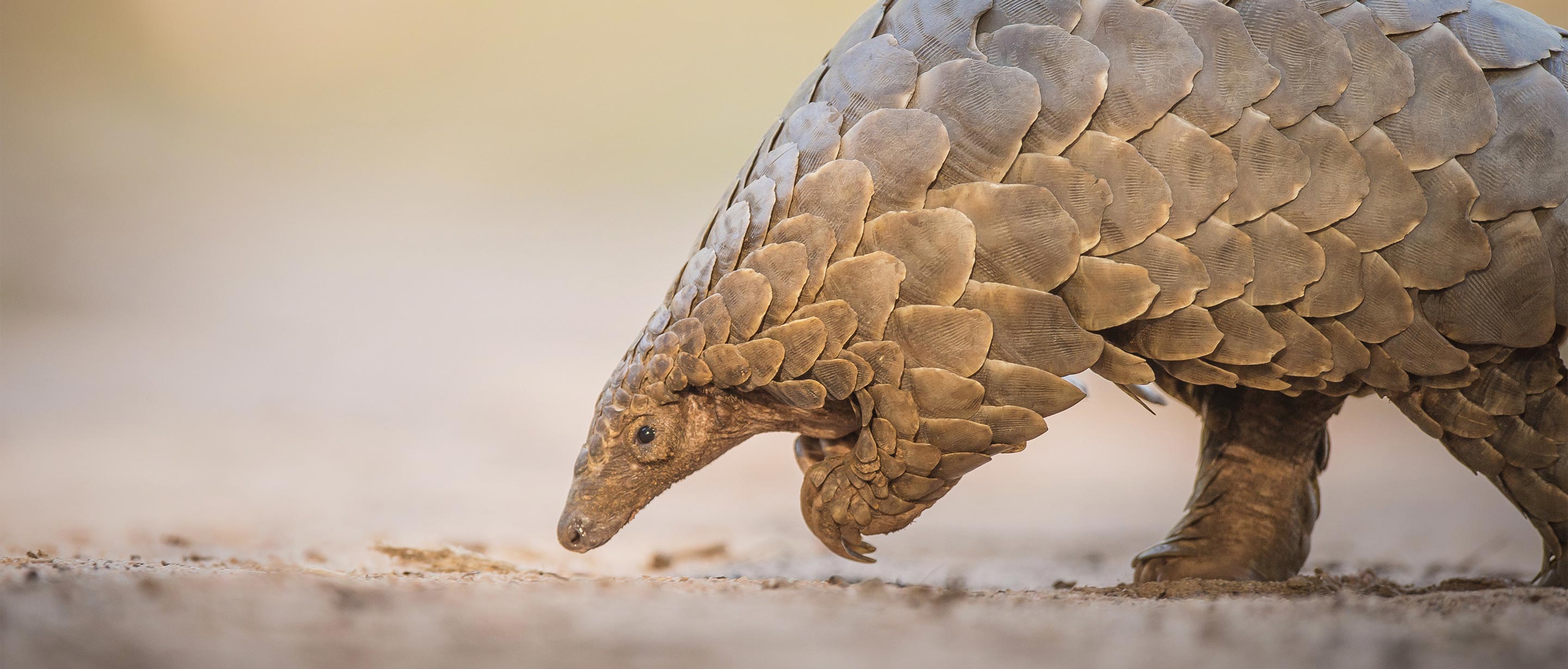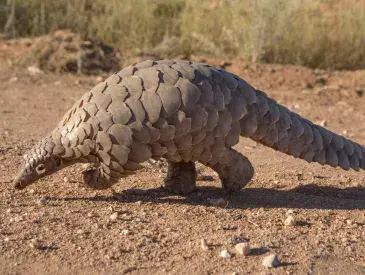What is a pangolin?
Despite its scaly appearance, this species is a mammal, not a reptile. Its scales are actually made up of keratin, which accounts for about 20 percent of its weight. It has a small head and a long, broad tail. It has no external ears, but its hearing is quite good. It also has no teeth and instead possesses a gizzard-like stomach that is specially adapted for grinding food. To assist the grinding, this scaly creature consumes small stones and sand.
African White-Bellied (Phataginus tricuspis) Giant Ground (Smutsia gigantea) Ground (Smutsia temminckii) Black-Bellied (Uromanis tetradactyla)
From 1.5 to 33 kilograms (3.5 to 73 pounds) depending on the species.
From 30 to 152 centimeters (12 to 60 inches) depending on the species.
Little data, estimated up to 20 years
Species dependant: Dense forest, forested savannas, swamp forests, lowland forests, and floodplain grasslands. All species are never far from a water source.
Insectivorous
3 to 5 months
Leopards, hyenas, humans

Challenges
Demand for pangolin scales and meat is driving this mammal to extinction.
Large-scale trafficking is driven by a belief that pangolin scales have magical and curative properties and demand for their meat. When mixed with bark from certain trees, the scales are thought to neutralize witchcraft and evil spirits. If buried near a man’s door they are said to give an interested woman power over him. The smoke from their scales is thought to improve cattle health, keep lions away, and cure ailments like nose-bleeds. Although their scales are made of keratin—the same substance that makes up human hair and nails—they are in high demand in certain Asian countries where the scales are believed to cure illnesses ranging from cancer to asthma, and their meat is considered a delicacy. In some areas, tribes believe a sighting of this scaly mammal indicates there will be a drought and the only way to prevent it is by killing the animal.
Solutions
We are protecting this scaly mammal from extinction:
African Wildlife Foundation, along with partner organizations, creates public awareness campaigns, like the When the Buying Stops, the Killing Can Too campaign—with celebrities like Jackie Chan, Yao Ming, and Richard Branson—to educate consumers of wildlife products about the damage being done to wildlife populations and the lack of any medicinal or magical properties in pangolin scales.
Through its Canines for Conservation program, AWF works with wildlife authorities to train and deploy sniffer dog teams to key airports, seaports, and other wildlife trafficking hubs. Dog-and-handler teams have intercepted pangolin scales across the continent on multiple occasions.
AWF works with communities living near these vulnerable mammals and other wildlife to provide them with tools and incentives for sustainable agriculture that allow them to move away from hunting threatened wildlife for food.


Behaviors
They are all armed and dangerous.
All pangolins are able to roll themselves into a ball as self-defense. Their armor-plated scales are also capable of a cutting action, worked by powerful muscles, which inflict serious wounds on anything inserted between them. When threatened, they can also emit a noxious-smelling acid from their glands, similar to skunks except there is no spraying.
Females are usually alone with their young.
Infants are about 15 centimeters long and weigh about 3 to 16 ounces at birth. Their pale, soft scales begin to harden by the second day. The baby is folded in the mother's lap or rolled-up body. Nursed for 3 to 4 months, it begins to eat termites at 1 month. At this time the infant begins to accompany the mother, perhaps riding on the base of her tail. If the mother senses danger, then the baby slips under her and is protected when she rolls up her body.
Diet
Pangolins are creatures of the night.
They remain in their burrows during the day and come out at night to hunt. It uses its keen sense of smell to locate termite and ant nests, digging the insects from mounds using its claws and eating them with its extremely long tongue (which can be up to 41 centimeters). In some cases, this mammal's tongue is actually longer than their body. Large salivary glands coat the tongue with gummy mucus to which ants and termites stick. When digging for insects, it can constrict their ears and nostrils to keep them out while feeding.
Habitats
Where do pangolins live?
They prefer sandy soils and can be found in woodlands and savannas that are within reach of water. They are dispersed throughout Southern, Central, and East Africa.



